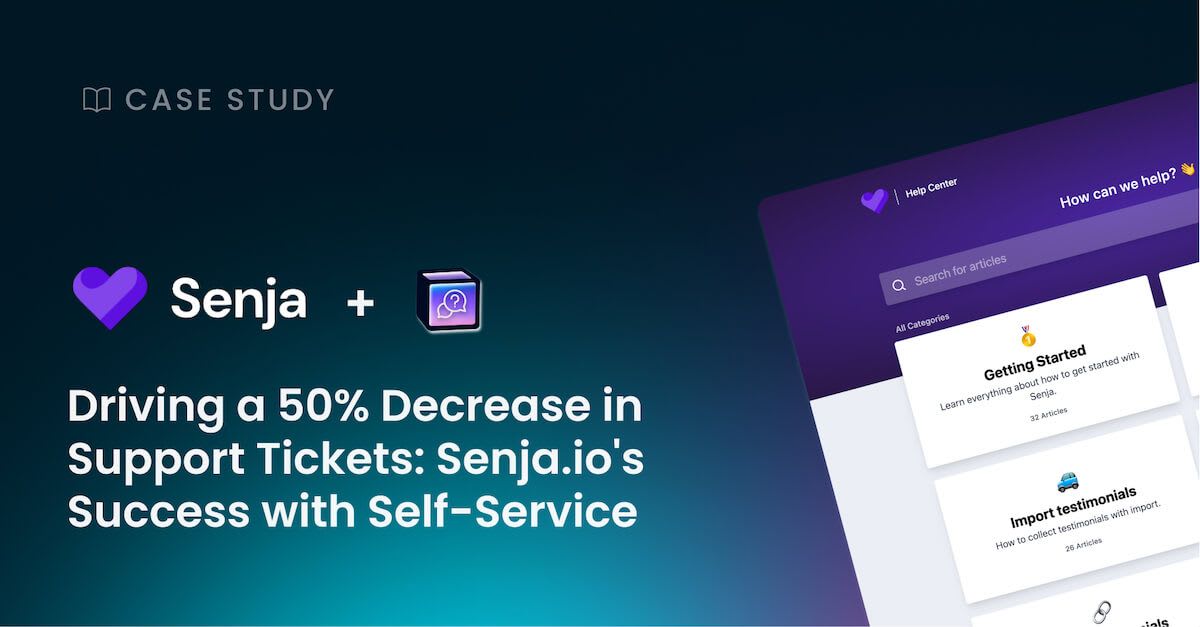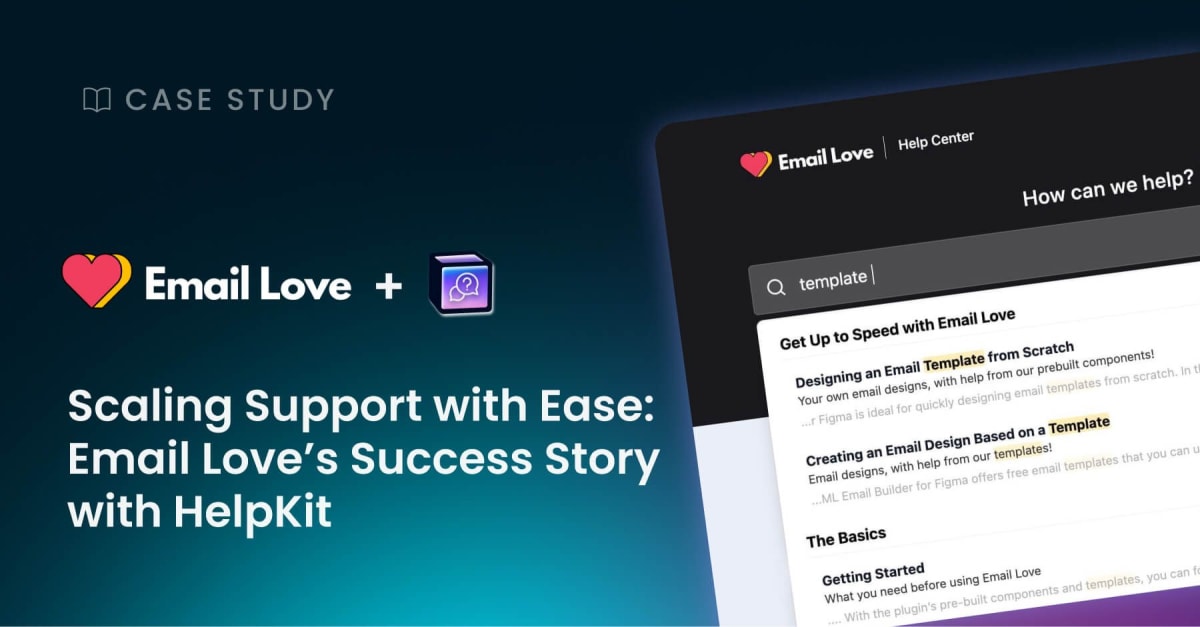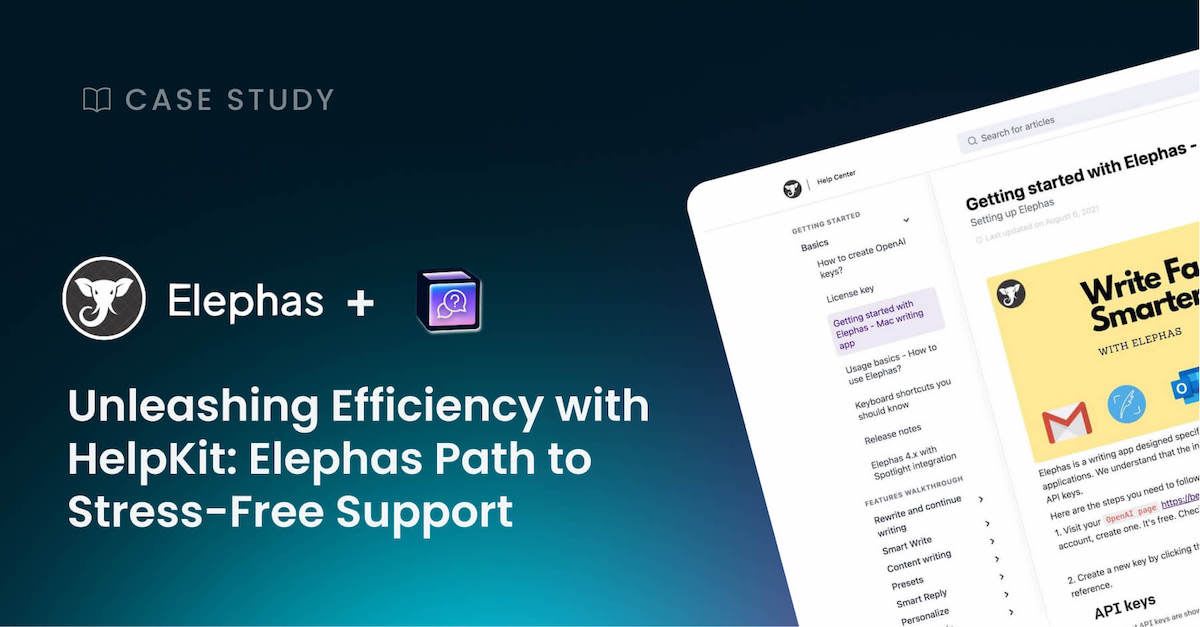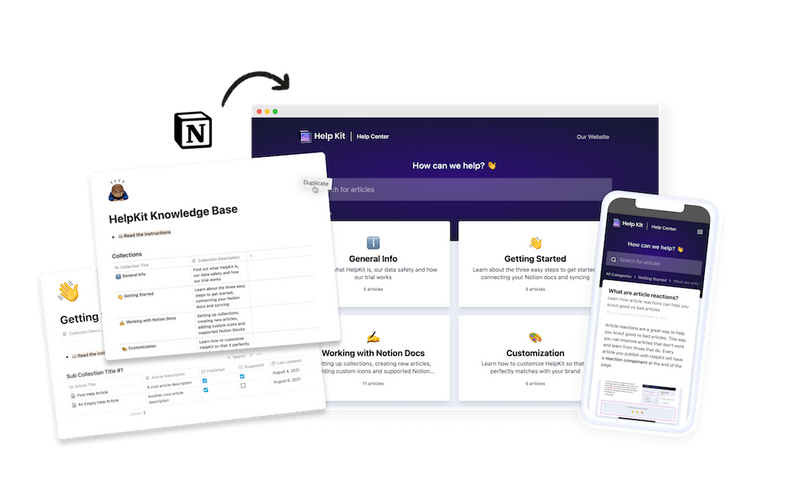Driving a 50% Decrease in Support Tickets: Senja.io's Success with Self-Service
• 3 min
I'm addicted to HelpKit’s search intent feature. I love identifying search misses and replying to negative feedback to an article. When someone leaves their email I update the article and drop them a note. They are really are amazed that someone read the feedback and improved the guide.
– Olly Meakings, Co-Founder of Senja.io
Olly Meakings is the founder of Senja.io. A beautiful, free platform that helps founders and creators collect and share video and text testimonials. As Senja got bigger, the team started getting tons of customer questions, and they needed a better way to handle all of it. They found HelpKit on Twitter and liked it because it fit right into their existing work process with Notion, didn't break the bank, and allowed customers to get help right inside their app. Now they use HelpKit to keep making their help articles better and to find out where their app can be improved, which means fewer support tickets for them and quicker solutions for their customers.

What were you looking for in a help center software?
As our SaaS grew we were receiving more and more live chat questions, and the quality of our support decreased. We ended up feeling like we were constantly fire-fighting, and wanted to help customers help themselves. We knew that improvements to the product could help, but also wanted a help center where people could quickly find the answers they need.
Where did you hear about HelpKit?
We heard about HelpKit on Twitter, through #buildinpublic
Why did you choose HelpKit over other platforms?
We were already using Notion for various documents and processes so it made sense as it didn't introduce a new workflow. We're big fans of the embeddable widget so people don't need to leave our app to get the help they need. And finally, the pricing was really fair (we're a bootstrapped company).

How do you currently use HelpKit?
Our product is split into four key areas - collect, manage, share and automate. So we started creating guides for each of those areas. We got something live as quickly as possible. We try to make the language as plain, simple and easy-to-follow as possible. Ongoing, we review HelpKit Insights at least once a week. We identify popular guides, negative article feedback, and search misses to help us constantly make and improve articles. We also use these searches to help us improve our product (so our users don't even need to seek help!).
What’s your favorite HelpKit feature?
I'm addicted to identifying search misses. I also love replying to negative feedback to an article. When someone leaves their email I update the article and drop them a note. They are really are amazed that someone read the feedback and improved the guide.
How does HelpKit help you and your customers?
For us - we’ve seen a massive 50% decrease in support tickets. This allows us to spend more time being proactive. For customers, they get their issues resolved faster and can achieve their goal of collecting and sharing more, better social proof.
If you could only give one tip to improve your customer support, what would it be?
Give customers the support they need BEFORE they need to reach out. Do this by improving your product through reviewing and acting on user recordings and your product’s historic help tickets. When they do message, move away from fire-fighting and into a more concierge response.






